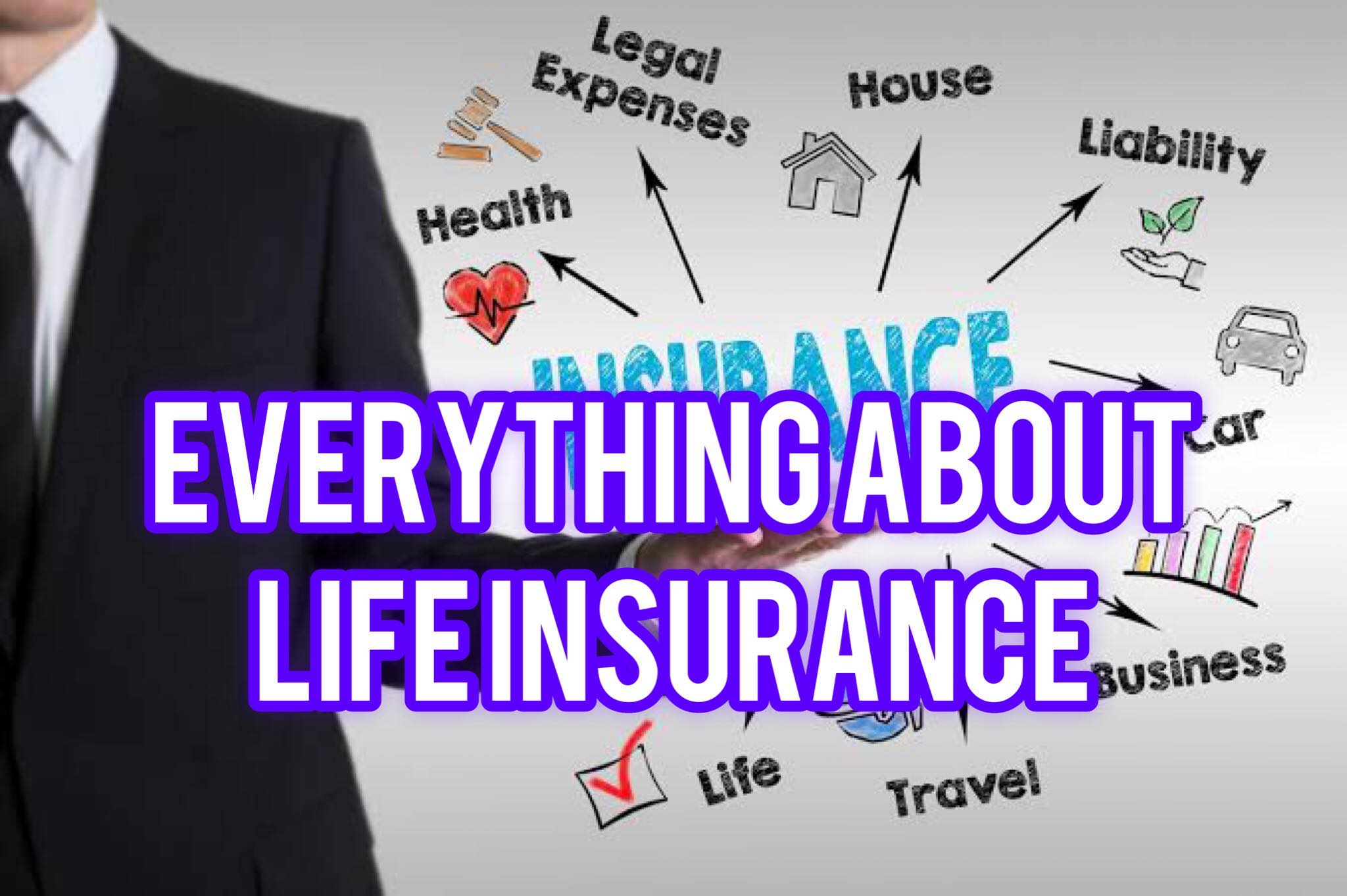According to the 2020 Insurance Barometer Report from trade associations LIMRA and Life Happens, there are a lot of people who claim to need life insurance but do not actually have it. The propensity for people to overestimate its cost can help to explain this in part.
People may hesitate to purchase the necessary life insurance due to perceptions of affordability and value. A $250,000 term life insurance policy for a healthy 30-year-old would cost at least $500 a year, according to more than half of survey respondents in the Insurance Barometer Report. However, the typical price is more like $160 per year. The difference between perceived and actual costs is quite large. Here is an overview of the information you need to make a sound decision on the best life insurance.
What Is Life Insurance?
A life insurance policy is an agreement between a policy holder and a life insurance company. In return for premiums paid by the policyholder during their lifetime, a life insurance policy guarantees the insurer will pay an amount of money to one or more named beneficiaries after the covered person passes away.
You and an insurance provider enter into a contract for life insurance. In essence, the insurance company will give your beneficiaries a lump sum, known as a death benefit, in return for your premium payments.
The money is available for any use by your beneficiaries. This frequently entails paying regular payments, a mortgage, or college expenses for a child. Having life insurance as a safety net can ensure that your family can continue to live in their current home and pay for the expenses you had budgeted for.
Term and permanent life insurance are the two main categories. While term life insurance offers protection for a specific period of time, permanent life insurance, such as whole life insurance or universal life insurance, can give lifetime coverage.
Types of Life Insurance
There are numerous life insurance options to suit a wide range of needs and preferences. The fundamental decision of whether to choose temporary or permanent life insurance is essential to take into account, depending on the short- or long-term demands of the individual to be insured.
Term life insurance
Term life policy is designed to last for a specified period of time before expiration. When you purchase the policy, you select the term. The usual durations are 10, 20, or 30 years. The finest term life insurance plans maintain a compromise between cost-effectiveness and long-term financial stability.
Once the term is finished, many term life insurance policies allow you to renew the contract each year. This is one approach to extend your life insurance coverage, but because the renewal rate is determined by your age at the time, annual rates may increase substantially. Converting your term life insurance policy to a permanent policy is a better option for long-term protection. If this is important to you, search for a convertible term policy because this is not always an option on term life insurance policies.
The Decreasing Term Policy
The death benefit of these plans decreases annually in accordance with a predetermined schedule. For the duration of the insurance, the policyholder pays a constant, basic premium.
Mortgages and decreasing term policies are frequently used together, with the policyholder matching the insurance payout to the decreasing principle of the mortgage.
The Yearly Renewable Term (YRT) Policy
Yearly renewable term (YRT) plans have no set duration but are renewable yearly without the need for proof of insurability.
As the insured person gets older, the rates go up every year. There is no set term, but as the policyholder ages, the premiums may become unaffordable, making the policy.
Once the term is over, many term life insurance policies allow you to renew the contract each year. This is one approach to extend your life insurance coverage, but because the renewal rate is determined by your age at the time, annual rates may increase dramatically. Converting your term life insurance policy to a permanent policy is a superior option for long-term protection. If this is important to you, search for a convertible term policy because this is not always an option on term life insurance policies.
Term life insurance interests young families with kids. The parents can get comprehensive coverage for a reasonable price. The family can count on the dividend to make up for any lost income if it becomes necessary.
Additionally, those with expanding families would benefit from these measures. They can foresee the need for coverage up to, instance, the time when their kids are grown up and capable of supporting themselves.
Naturally, an older surviving spouse may find the term life benefit valuable as well. However, considering the increased premium costs for senior policyholders, other options for supporting a surviving spouse could be better.
Permanent Life Insurance
The term “permanent life insurance” refers to all life insurance plans that never expire. Whole life and universal life are the two main types of permanent life insurance, and the majority of this type of coverage combines a death benefit with a savings component. Whole life insurance provides coverage for the insured’s entire lifetime and has a guaranteed rate of savings growth.
Along with a death benefit, universal life insurance also provides a savings component, but it has a variety of premium structure options and pays out according to market performance. Remember to properly investigate the companies you’re contemplating once you’ve decided on the policy that’s appropriate for you to ensure you’ll receive the most affordable life insurance coverage.
Whole Life Insurance
Whole life insurance, usually referred to as traditional life insurance, offers continuous death benefit protection for the duration of the insured’s life. Whole life insurance has a savings component in which cash value may build up in addition to paying a death benefit. A fixed rate of tax-deferred interest is accrued.
One type of permanent life insurance is whole life policies. Other terms include universal life, indexed universal life, and variable universal life. The first sort of life insurance was whole life, but since there are many different kinds of permanent life, whole life does not necessarily equate to permanent life insurance.
Universal Life (UL) Insurance
The flexibility offered by UL insurance is greater than that of whole life insurance. The death benefits and premiums can both be changed by policyholders. The cost of insurance (COI) amount and a savings component known as the cash value make up the two parts of UL insurance premiums.
The COI, as its title implies, is the minimal premium payment necessary to maintain the policy in effect. It is made up of a number of separate payments combined into one. COI consists of mortality fees, policy administration costs, and other costs directly related to maintaining the life insurance policy. Based on the policyholder’s age, insurability, and quantity of the insured risk, COI will change from policy to policy.
Term And Permanent Life Insurance
Although term life insurance and permanent life insurance have several key differences, most customers looking for low-cost life insurance coverage find that term life insurance best suits their needs. Term life insurance is limited in duration and provides a death benefit in the event that the policyholder passes away before the term has ended. As long as the policyholder continues to make premium payments, permanent life insurance remains in force. Another significant distinction concerns premiums; because term life does not require the development of a financial value, it is typically significantly less expensive than permanent life.
The amount of money needed to sustain your beneficiaries’ level of living or fulfill the requirement for which you are acquiring a policy should be determined before you apply for life insurance. Also take into account how long you will require coverage.
If you are the primary caregiver and your children are 2 and 4 years old, for instance, you would need adequate insurance to cover your custodial responsibilities until your children are old enough to support themselves.
If you want to add money for education, you can examine the cost of hiring a nanny and a housekeeper or employing commercial child care and cleaning services. In your life insurance estimate, take into account your spouse’s retirement needs as well as any outstanding mortgages. especially if the partner is a stay-at-home parent or earns much less. If you can afford it, sum up these costs over the following 16 or so years, adjust for inflation, and that’s the death benefit you might choose to purchase.
How Does Life Insurance Works?
A death benefit and a premium are the two primary parts of a life insurance policy. These are the two parts of term life insurance, however whole or permanent life insurance policies also include a cash value element.
Death benefit
The amount of money the insurance company promises to the beneficiaries named in the policy when the insured dies is known as the death benefit or face value. Examples of the insured and beneficiaries include parents and their children.
Based on the anticipated future needs of the beneficiaries, the insured will select the desired death benefit amount. Based on its underwriting standards for age, health, and any dangerous activities the proposed insured engages in, the insurance company will decide if there is an insurable interest and whether the proposed insured is eligible for the coverage.
Premium
The cash the policyholder spends on insurance is known as a premium. If the policyholder pays the required premiums, the insurer is obligated to pay the death benefit when the insured passes away. Premiums are calculated in part on the likelihood that the insurer will be obligated to pay the death benefit under the policy given the insured’s life expectancy. The insured’s age, gender, medical history, work dangers, and high-risk hobbies are all factors that can affect how long they live.
The operating costs of the insurance business are also covered in part by the premium. Insurance with greater death benefits, people who are more at risk, and permanent policies with cash value accumulation all have higher premiums.
Cash Value
Permanent life insurance has two uses for its cash value. It is a savings account that the policyholder can utilize for as long as the insured person is alive, and the money grows tax-deferred. Restrictions on withdrawals may be included in some policies, depending on how the money will be utilized. For instance, the policyholder might borrow money against the cash value of the policy and be required to pay interest on the loan’s initial principal.
The cash value can also be used by the policyholder to cover additional insurance costs or premium payments. When the insured person passes away, the cash value stays with the insurance company as a living benefit. The cash value’s outstanding loans will lower the policy’s death benefit.
What Are The Benefits of Life Insurance?
The benefits of getting life insurance are numerous. The most significant benefits and protections provided by life insurance policies are listed below. Most people buy life insurance to give money to beneficiaries who would be financially disadvantaged in the event of the insured’s demise. The tax benefits of life insurance, such as the tax-deferred growth of cash value, tax-free dividends, and tax-free death payments, might, however, present extra strategic opportunities for wealthy people.
Avoiding Taxes
One advantage of a life insurance coverage is that it is typically tax-free. Rich people occasionally get permanent life insurance within a trust to cover estate taxes. This tactic aids in maintaining the estate’s worth for the benefit of the heirs.
Tax evasion, which is unlawful, should not be confused with tax avoidance, which is a lawful method of reducing one’s tax obligation.

Sage is a financial/consumer journalist and senior editor, personal finance, of TrendsHQ. EXPERTISE: Personal Finance, Careers, Jobs, Scholarships, and Entertainment.
